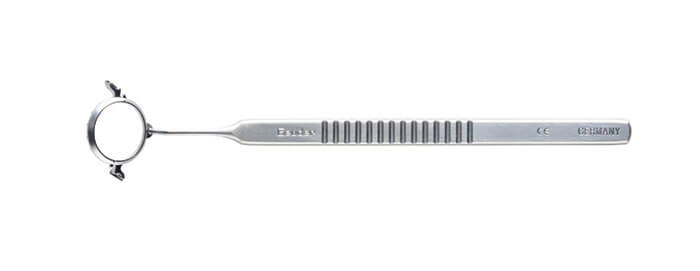
The double-needle technique for intrascleral IOL fixation in the aphakic eye can be tricky – and calls for a clear eye and a steady hand. The standard method requires the surgeon to identify sclerotomy sites by means of axis markers, calipers and ink; however, it is difficult for the surgeon to precisely control the needles when piercing the conjunctiva and advancing through sclera – and hence very hard to form predictable insertion angles when creating the tunnels. As a consequence, the double-needle technique appears conceptually simple, yet is not easy to master and can be challenging in terms of standardization and reproducibility.
Dr Shin Yamane, Assistant Professor in the Department of Ophthalmology and Microtechnology, Yokohama City University Medical School, Japan, has now refined the double-needle technique with the invention of a device that both stabilizes the eye and guides needles into the sclera at appropriate angles. This helpful handheld innovation comprises a toothed ring for fixating the globe during needle insertion, and two integral “landmarks” for orientation and identification of the sclerotomy sites. The landmarks are located 2 mm from the limbus and 180 degrees apart, eliminating the need for axis markers, calipers or ink. Furthermore – and perhaps most crucially – the device features two grooved platforms to help guide needles through the fixation ring. The needle guides are set at angles of 20 degrees with respect to the corneal limbus, and 10 degrees with respect to the iris surface – an arrangement that enables creation of reproducible scleral tunnels and avoids putting stress on the IOL haptics.
The result? Very precise (up to 0.25 D) IOL placement in aphakic eyes by scleral fixation alone, with no requirement for conjunctival incisions, suturing or glue. Furthermore, the technique simplifies the procedure and shortens the surgical time, leaving haptics strongly fixated onto sclera in a minimally invasive way.
